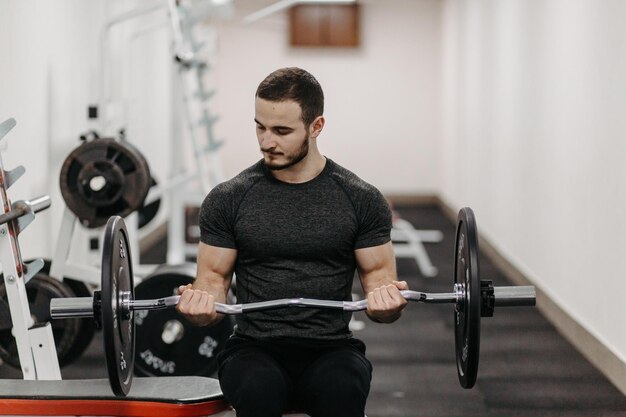The human body is a complex machine, and knowing how it works can really help you on your fitness journey. One key aspect to think about when designing a workout routine is the type of muscle fibers in your body. This article will explore the details of muscle fibers and how to train them effectively.
Muscle fibers are the building blocks of your muscles, and they come in different types, each with its own characteristics and functions. Understanding these differences is crucial for getting the most out of your training.
There are two main types of muscle fibers: slow-twitch (Type I) and fast-twitch (Type II).
Slow-twitch fibers are endurance-oriented, making them great for long-duration, low-intensity activities. They don鈥檛 tire easily but have a lower potential for growth. Fast-twitch fibers are larger, have a higher growth potential, and are used for short, high-intensity activities, but they fatigue quickly.
Different muscles in your body have different ratios of these fibers. For example, the muscles in your calves and abs, which help with balance and posture, have more slow-twitch fibers. This influences how these muscles should be trained for the best results.
Training calves can be tricky because they have a lot of slow-twitch fibers, which are made for stamina and are always working, like when you walk. To effectively train your calves, you should mimic their natural function with long-duration, low-intensity exercises. Some good exercises include uphill walking or standing calf raises done slowly. You can also benefit from high-load, low-rep exercises if done correctly.
An effective calf workout could include:
– Standing calf raises: 5 sets of 25-35 slow repetitions with a maximum of 45 seconds rest between sets.
– Seated calf raises: 5 sets of 20-25 slow repetitions with a maximum of 45 seconds rest between sets.
– Static toe stands: 3 sets of at least 60 seconds with 60 seconds rest between sets.
This routine should be done at least twice a week with a few days of rest in between, gradually increasing the workload over time to stimulate muscle growth.
The abs, similar to the calves, have a high proportion of slow-twitch fibers. They help with maintaining pelvic pressure and stabilizing the body during movement, so they get a lot of stimulation from full-body exercises. However, specific ab exercises can also be beneficial. For example, the classic crunch can effectively target your abs if done correctly. Given their high endurance, doing sets for 45-60 seconds can effectively stimulate them.
Remember, having visible abs is more about body fat percentage than muscle size, so a healthy diet is crucial along with training.
A functional ab workout could include:
– Floor crunches: 2-3 sets of 45-60 seconds with a weight on your chest.
– Planks: 2-3 sets of 30-second holds to engage your abs in an isometric contraction.
Understanding the science behind your muscle fibers can really improve your training efficiency. By tailoring your workouts to suit the characteristics of your muscle fibers, you can optimize muscle growth and achieve your fitness goals more effectively. Consistency, along with proper diet and recovery, is key to success.







